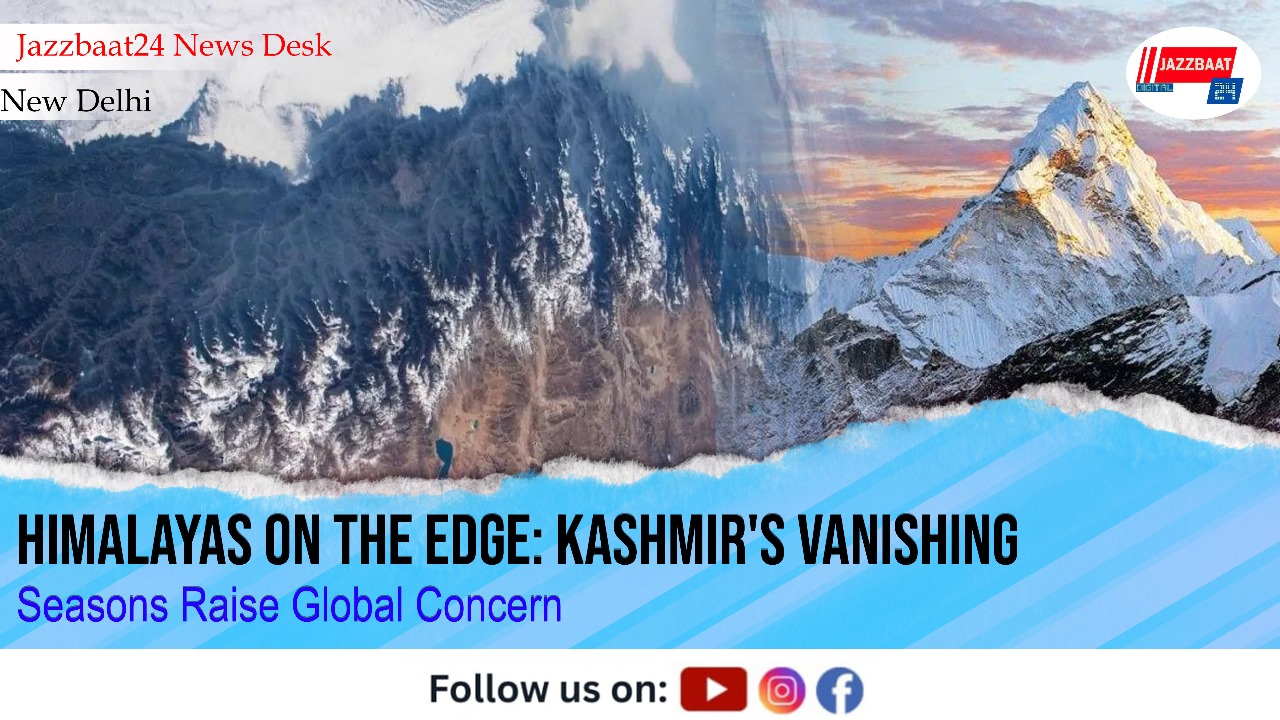New Delhi: Jammu and Kashmir, long celebrated for its alpine charm, snow-fed rivers and lush green landscapes, is now confronting a climate emergency that threatens its ecological identity and cultural heritage.
This year, the Valley witnessed a dramatic and sustained rise in temperatures, with both daytime highs and nighttime lows breaking historical records and reshaping seasonal expectations.
According to data from the India Meteorological Department (IMD), Srinagar recorded a staggering 5°c surge above normal on multiple occasions this summer. On June 20, the city hit 35.5°c, the highest June temperature in two decades.
Nights offered little relief, with minimum temperatures climbing 3°c above average, turning evenings into oppressive stretches of heat. These anomalies were not isolated incidents but part of a consistent pattern from May through September, marking the longest heatwave spell among all Indian states and union territories in 2024.
"This is not just a seasonal fluctuation, it's a structural shift in the Valley's climate," said Sonam Lotus, a climate scientist. "Himalayas are warming faster than the global average and Jammu and Kashmir is now a frontline region in this transformation,".
Valley's famed water bodies that include Dal Lake, Lidder, Wular and Manasbal are shrinking under the dual pressure of rising temperatures and declining rainfall. Monsoon deficits this year slashed precipitation by nearly 50 percent , drying wetlands that once hosted thousands of migratory birds from Central Asia. Ornithologists have reported a sharp decline in bird populations, raising alarms about the long-term ecological consequences.
Tourism, a vital pillar of the Valley's economy, is also under strain. Gulmarg, a premier ski destination, saw a delayed and shortened snow season last winter. "We used to have snow by October, but now it's mid-December or later," said Farhat Naik, a snowboard instructor. "Our bookings dropped, and so has the snow."
Environmentalists point to rapid urbanization and the erosion of green cover as key contributors to the crisis. Srinagar's urban footprint has expanded from 35 sq km to over 80 sq km in recent decades, often at the expense of forests and wetlands.
"Urban Heat Island effect is intensifying," explained Saima Khan, an environmental planner. "Concrete traps heat, and without trees to cool the air, cities like Srinagar are becoming increasingly unliveable during summer."
The consequences are not limited to discomfort. In June, the School Education Department was forced to shift school timings to early mornings as children faced dehydration and heat stress. Vulnerable populations, including the elderly, outdoor workers, and low-income families, bore the brunt of the crisis with limited access to cooling infrastructure or healthcare. Extreme weather events including cloudbursts, flash floods, and landslides have also become more frequent.
A recent cloudburst in Kishtwar led to deadly floods, highlighting the fragility of the Himalayan ecosystem and the urgent need for climate-resilient infrastructure.
Experts are calling for immediate and coordinated interventions. These include reforestation drives, wetland restoration, and climate-smart urban planning.
"We must treat this as a climate emergency," Khan urged. "The window for meaningful action is closing fast,".
